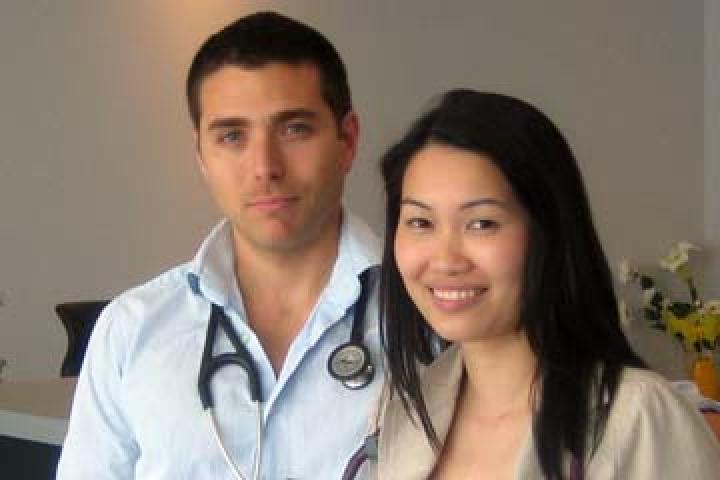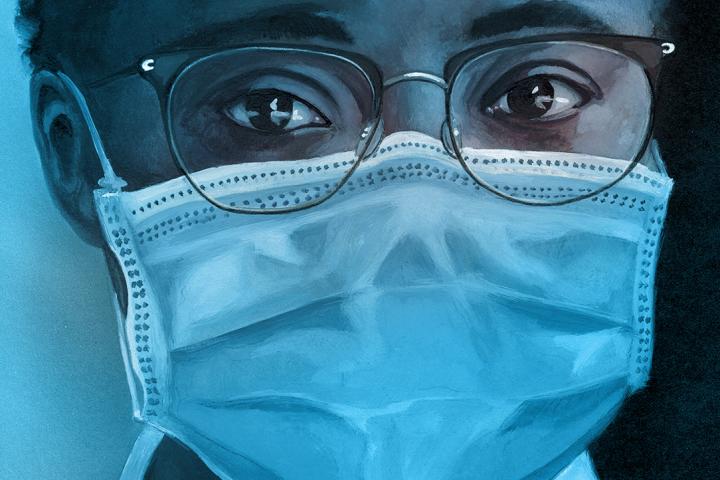"Time's up" called the exam proctor. “Pencils down.” As I turned in my exam materials, I felt the total relief of completing my last final of the year. I walked out of the building and saw the tired, happy faces of my fellow medical school students in the warm summer’s sun; I couldn’t help but smile. We had come a long way in this first year of medical school, and we learned more than we thought our heads could hold.
But even though the Queen’s campus was bare and exams were over, the year wasn’t quite done yet. Each spring, Queen’s sends its first-year medical students across Ontario to work in rural family medicine clinics. During this time, we were to apply what we’ve seen in our textbooks to real patients, and get a feel for “small-town living.” It’s called “Community Week,” and students often cite it as the highlight of the first year of medical school. Armed with our stethoscopes, white clerk coats, and a healthy mix of confidence and fear, we dispersed across the province to work in the clinics for the first time.
I was sent to Arnprior, a town of 7,500 people located about an hour north of Ottawa. After a week there, my classmate, Justin Bell, Meds’15, and I drove 2,000 km to Dryden, just east of the Manitoba border, to spend an additional month working in a “summer studentship” at a rural family medicine clinic.
The most striking features of these small towns are the warm welcome and hospitality. While we were in the Ottawa valley, the hospital CEO and local mayor wined and dined us as they showered us with reasons to move to their town one day. “The physicians live a five-minute walk away from the hospital.” “You’ll never believe how inexpensive property is here!” “The town has everything you need here, but don’t forget the city is just down the highway.”
However, more important to us than the welcome accorded us by the politicians and administrators was the reception we received from the townspeople. They welcomed us into their homes and took us kayaking, fishing, and boating. The people wore the pride of their town on their sleeves, and many made a point of asking if I would move to the area someday to take over the local practice. Even though I introduced myself as a medical student, I was regularly addressed as “doctor,” a foreign sound to my ears that caught me off guard each time.
I was completely charmed by these cottage-country villages, and even more impressed with their physicians. The family physicians in small hospitals are faced with a great breadth of practice. These doctors are internists, obstetricians, coroners, anesthetists, emergency physicians, and more – they are true general practitioners. However, the disadvantage of a rural hospital is the lack of resources. For example, the hospitals don’t always have the personnel to employ lab and imaging technicians on Saturday and Sunday nights. In addition, complicated cases must naturally be referred to larger facilities.
Spending five weeks working in rural communities was an eye-opening adventure for me. I learned about the value of tight-knit communities, saw a variety of medical practices, and caught a glimpse of native culture.
In Dryden, I was struck by the uniqueness of the Aboriginal patient population. I encountered young men who were plagued with suicidal ideation because most of their family and friends had already attempted or died by suicide. I met a lovely elderly woman who suffered horribly because her grandchildren kept stealing the narcotics she needed for relief. I saw intoxicated men who were within inches of death because they were high on deodorant, paint thinner, and hairspray.
However, I also got a chance to learn a little about Ojibway culture and to see wonderful instances of Aboriginal families helping each other. For example, I met an exhausted daughter caught between old traditions and modern living, trying to care for countless troubled family members while holding down her own job. In addition, I observed a loving mother sternly lecturing her grown son in Ojibway to stop drinking, and helping him get off the streets.
Spending five weeks working in rural communities was an eye-opening adventure for me. I learned about the value of tight-knit communities, saw a variety of medical practices, and caught a glimpse of native culture. Perhaps one day I will return to these communities, but for now I look forward to returning to Queen’s in the fall equipped with fresh, hands-on clinical experience and a brand-new perspective.


